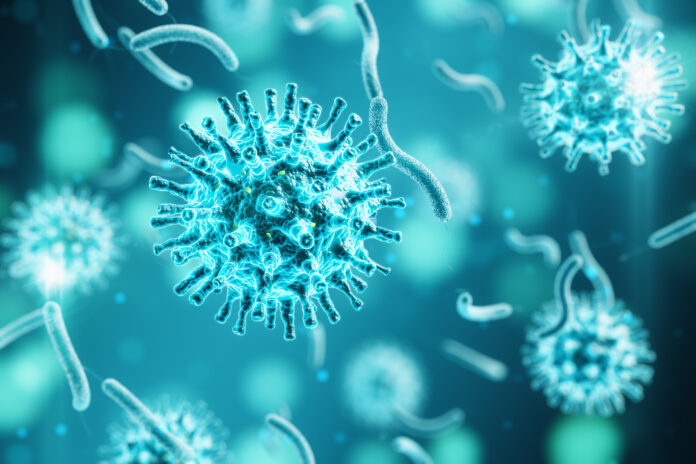Bacteria More Complex than Imagined
A few weeks ago, my wife and I headed up to Pismo Beach for a few days for a little R&R. While there, we decided it would be fun to rent a couple of buggies and ride the dunes.

It was fun—but it was also quite a challenge. Navigating the dunes on a buggy is much more difficult than I thought. For example, when approaching the top of a dune it’s important to know where the ocean is relative to your position. If you head toward the ocean, the descent on the other side of the dune is most likely gradual. But if you drive away from the ocean, the drop-off can be quite dramatic—several stories in some instances. Drivers must use special techniques for going down into the dunes and for getting back out. If you don’t have the right speed, angle of approach, etc., you almost certainly get stuck in the sand. The time of day makes a difference, too. In the morning the sand is more moist and compact. As it heats up, the sand becomes loose and gives way more easily.
Recently, a team of biochemists discovered that the biochemistry of bacteria is a lot more complicated than anyone had previously thought.1 As the researchers point out, this insight represents the “dawning of a new age in bacteria research.”2 It also adds to the evidence that life is the work of a Creator.
Protein Acetylation
In complex, eukaryotic cells, once proteins are made at ribosomes, they often undergo chemical modification through a process called posttranslational modification. These modifications increase proteins’ chemical complexity, extending it well beyond what is possible with the twenty amino acids specified by the genetic code. These modifications alter the function of proteins and, in some cases, turn proteins on or off.
Some posttranslational modifications impact gene expression, particularly if the modified proteins interact with gene-harboring DNA. For example, protein acetylation—in which an acetyl group is usually attached to a lysine residue in the target protein—impacts gene expression in eukaryotic organisms.
Protein Acetylation in Bacteria
In eukaryotes, protein acetylation is widespread, impacting thousands of different proteins, including those that play a role in controlling gene expression and those with other metabolic functions. Until recently, most biochemists thought this form of protein modification was unique to eukaryotes, and consequently, absent in bacteria.
Mounting evidence, however, indicates the traditional view is incorrect. As it turns out, bacteria make use of protein acetylation, just like organisms made up of complex cells. It also appears that this process is metabolically expansive and widespread among bacteria.
This new insight means the metabolic capabilities of bacteria are far more complex and sophisticated than traditionally thought. In effect, posttranslational modifications increase the number of protein isoforms specified by the genome. As a consequence, the number of proteins encoded in a bacterium’s genome may be significantly larger than appears based on simply tallying the number of genes housed in the genome. The capability of these microbes to switch between protein isoforms means that these organisms are far more metabolically flexible than thought.
The Complexity of the Simplest Life-Forms
As I wrote in my book The Cell’s Design and elsewhere (here and here), microbiologists and biochemists recognize that the simplest life-forms on Earth are far more complex than imagined. The minimum gene number for bacteria (capable of existing independently in the environment) ranges from as low as 1,300 genes to as high as 2,300, depending on the life style of the microbe (heterotrophic, chemoautotrophic, or photoautotrophic). As I discussed in my last two posts (go here and here), life scientists also now understand that the internal environments of bacteria are highly organized at the molecular level. And this latest insight about protein acetylation suggests that the actual metabolic complexity of these microbes far outstrips the common conception.
Complexity and the Case for Intelligent Design
In and of itself, complexity doesn’t make the case for intelligent design. It’s true that complex systems aren’t necessarily designed, but if the complexity displays order and organization (as is the case for bacteria), then it points to the work of a Mind.
The growing recognition of bacterial complexity also has implications for the origin-of-life question. Increasingly, the evidence suggests that bacteria display an inherent minimal complexity required for them to even exist. Any chemical ensemble less complex than this minimum complexity cannot be considered “alive.”
The ever-increasing recognition that life’s minimum complexity is more sophisticated than thought makes it harder and harder to think that life could have emerged through chemical evolution. These new advances have left the evolutionary explanation for life’s origin buried in the sand.
Endnotes
- Linda I. Hu, Bruno P. Lima, and Alan J. Wolf, “Bacterial Protein Acetylation: The Dawning of a New Age,” Molecular Microbiology 77 (2010): 15–21.
- “‘Dawning of a New Age’ in Bacteria Research,” ScienceDaily.com, accessed July 12, 2010, https://www.sciencedaily.com/releases/2010/07/100712102804.htm.




